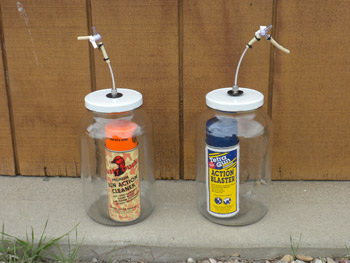Expert Services | Environmental Contamination | Risk Management | Third-Party Review
Publications
Use of CSIA to Distinguish Between Vapor Intrusion and Indoor Sources of VOCs
CHICAGO — Indoor sources of volatile organic compounds (VOCs) are ubiquitous, resulting in detectable concentrations in indoor air, often at concentrations above regulatory screening levels. Because of these indoor sources, the detection of a site-related VOC in a potentially affected building at a concentration above the regulatory screening level does not necessarily indicate a vapor intrusion impact.
 At sites where the subsurface and indoor sources of VOCs exhibit different isotope signatures, compound-specific isotope analysis (CSIA) may be used to distinguish between vapor intrusion and indoor sources of the same VOCs. Although CSIA has been validated and accepted as an effective tool for distinguishing between different sources of VOCs in groundwater, we are not aware of prior application of CSIA to identify the source of VOCs in indoor air.
At sites where the subsurface and indoor sources of VOCs exhibit different isotope signatures, compound-specific isotope analysis (CSIA) may be used to distinguish between vapor intrusion and indoor sources of the same VOCs. Although CSIA has been validated and accepted as an effective tool for distinguishing between different sources of VOCs in groundwater, we are not aware of prior application of CSIA to identify the source of VOCs in indoor air.
In order to evaluate the utility of CSIA to distinguish between vapor intrusion and indoor sources of VOCs, we have conducted a preliminary study at Hill AFB. The results indicate that there are measurable differences in δ13C values between TCE in the subsurface at Hill AFB and indoor sources of TCE. The δ13C values for the three source area soil gas samples ranged from -25.3‰ to -24.4‰, δ13C values for four groundwater samples collected from the off-site plume ranged from -23.8‰ to -20.6‰, δ13C values for seven soil gas samples collected from above the off-site plume ranged from -23.7‰ to -5.2‰. These results show a pattern of 13C enrichment away from the source area. In contrast, the δ13C values for the four indoor source samples ranged from -26.6‰ to -25.5‰, lower values than any of the subsurface samples. These preliminary results support the hypothesis that CSIA of indoor air samples can be used to distinguish between vapor intrusion and indoor sources of the same VOC.
The research was presented at the Air & Waste Management Vapor Intrusion 2010 in Chicago, Illinois.
Note: The Founder of Tri-S Environmental contributed to this project and is an author on the paper describing the results.
Source: Air & Waste Management Association Vapor Intrusion 2010 Conference
